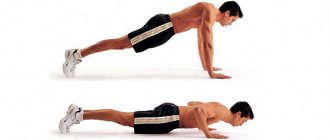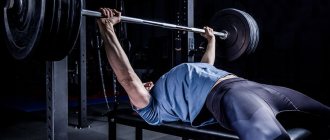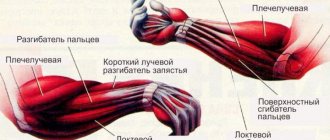Endurance is the body’s ability to perform work for a certain period of time without reducing performance. Endurance is determined by time. The more endurance is developed, the more time the athlete can perform the exercise. A great example is a marathon, where a person performs physical effort for a long time. Endurance provides the body with increased performance indicators. The cerebral cortex is responsible for the level of endurance. It is she who regulates and determines the state of the central nervous system, as well as other organs and systems, for example, the energy system.
Benefits of developing endurance
Endurance is a useful ability not only for sports, but also in life you often have to use this skill, and life is easier for those who have more developed endurance. An excellent example is performing tasks such as cleaning or gardening, or whatever. By the way, climbing stairs to the top floors of high-rise buildings, in addition to physical fitness, requires some level of endurance. Of course, it will not be difficult for young people and people involved in sports to overcome the cascade of steps to the thirteenth floor, but for older people who last performed the exercises ten to fifteen years ago, such a task will be surmountable, but certainly difficult!
Developing endurance is simply necessary for athletes, namely track and field athletes, team sports athletes, swimmers, tennis players, athletes of any type of martial arts and many others! In general, endurance is very important in a person’s life, and without its proper level, the quality of life will not be at its best. She makes life easier! Endurance training:
- strengthen the cardiovascular system;
- increase breathing efficiency;
- improve overall well-being and tone.
Endurance training
To effectively train endurance, you should follow simple rules.
- Learn patience . Developing endurance involves keeping muscles under load for a long time. For example, one endurance workout may include 1.5 hours of continuous running. Therefore, the psychological attitude during such training plays an important role.
- Keep your heart rate between 130-160 beats/min (or 85% of your maximum heart rate). It is at this heart rate that general endurance is best trained.
- Select the load depending on your goals . To develop speed endurance, run, swim or ride a bike. Accordingly, to develop strength endurance, training in the gym, etc., is more suitable.
- Perform each exercise for 15 – 90 minutes . For example, you need to run or ride a bike for at least 15 minutes per workout. Ideally, you need to increase the time under continuous load to 90 minutes.
- Use interval loading . Vary your running or riding speed during a race or endurance event. For example, you run for 5 minutes at a normal pace, 1 minute at a fast pace. Then repeat the interval. If you wish, you can maintain this rhythm until the end of the distance.
Types of endurance
There are several types of endurance; below we will consider each in more detail.
General endurance is the body’s ability to withstand prolonged loads (work) of moderate intensity, without reducing the efficiency of work and maintaining the body’s performance at the same level. The level of general endurance is based on the aerobic capacity of the human body. This type is a combination of other types of endurance. This species is the most important in human life and is of key importance to physical health.
Special endurance is the ability to work for a long time, characteristic of a specific type of activity.
Special endurance can be classified according to the following characteristics:
- Motor action – jumping endurance.
- Interaction with other abilities - strength endurance.
Specific endurance is not just the ability to perform an exercise for a long time, but also the ability to perform a task with maximum efficiency within a specific mode of action, such as walking, running or swimming.
High-speed – allows the athlete to perform fast movements without breaking technique or fatigue for a long time.
Strength endurance – allows you to perform an action associated with high physical activity for a long time without deteriorating the technique.
Static – the ability to keep muscles tense for a long time.
Dynamic is a type of strength endurance, the ability to perform heavy loads at an average pace for a long time.
Coordination – the ability to repeat complex movements multiple times.
And that's not all types of endurance. They all unite in general endurance, and their groups in special.
For example , the special endurance of an American football player consists of such types as: jumping, coordination, cardiovascular and muscular, dynamic and speed.
Endurance and the basics of its training methods
Endurance is the ability to withstand physical fatigue during muscular activity.
The measure of endurance is the time during which muscular activity of a certain nature and intensity is carried out. For example, in cyclic types of physical exercise (walking, running, swimming, etc.), the minimum time to cover a given distance is measured. In gaming activities and martial arts, the time during which the level of a given efficiency of motor activity is achieved is measured. In complex coordination activities associated with precision movements (gymnastics, figure skating, etc.), an indicator of endurance is the stability of technically correct execution of the action.
There are general and special endurance.
General endurance is the ability to perform work of moderate intensity for a long time with the global functioning of the muscular system. In another way, it is also called aerobic endurance. A person who can endure long running at a moderate pace for a long time is able to perform other work at the same pace (swimming, cycling, etc.). The main components of general endurance are the capabilities of the aerobic energy supply system, functional and biomechanical economization.
General endurance plays a significant role in optimizing life activity, acts as an important component of physical health and, in turn, serves as a prerequisite for the development of special endurance.
Special endurance is endurance in relation to a specific motor activity.
Special endurance is classified:
- according to the signs of motor action, with the help of which a motor task is solved (for example, jumping endurance);
- according to the signs of motor activity, under the conditions of which the motor task is solved (for example, gaming endurance);
- based on the signs of interaction with other physical qualities (abilities) necessary for the successful solution of a motor task (for example, strength endurance, speed endurance, coordination endurance, etc.).
Special endurance depends on the capabilities of the neuromuscular system, the speed of consumption of intramuscular energy sources, the technique of mastering motor action and the level of development of other motor abilities.
Different types of endurance are independent or have little dependence on each other. For example, you can have high strength endurance, but insufficient speed or low coordination endurance.
The manifestation of endurance in various types of motor activity depends on many factors: bioenergetic, functional and biochemical economization, functional stability, personal and mental, genotype (heredity), environment, etc.
Bioenergetic factors include the amount of energy resources available to the body and the functionality of its systems (respiration, cardiovascular, excretion, etc.) that ensure the exchange, production and restoration of energy during work. The generation of energy necessary for endurance work occurs as a result of chemical transformations. The main sources of energy production in this case are aerobic, anaerobic glycolytic and anaerobic alactic reactions, which are characterized by the rate of energy release, the amount of fat, carbohydrates, glycogen, ATP, CTP permissible for use, as well as the permissible amount of metabolic changes in the body.
The physiological basis of endurance is the aerobic capabilities of the body, which provide a certain amount of energy during work and contribute to the rapid restoration of the body’s performance after work of any duration and power, ensuring the fastest removal of metabolic products.
Anaerobic alactic energy sources play a critical role in maintaining performance during maximal intensity exercise lasting up to 15-20 seconds.
Anaerobic glycolytic sources are the main ones in the process of energy supply for work, lasting from 20 s to 5-6 minutes.
Factors of functional and biochemical enonomization determine the ratio of the result of an exercise and the costs of achieving it. Typically, efficiency is associated with the energy supply of the body during work, and since energy resources (substrates) in the body are almost always limited, either due to their small volume, or due to factors that complicate their consumption, the human body strives to perform work at the expense of a minimum of energy consumption. Moreover, the higher the qualifications of the athlete, especially in sports that require endurance, the higher the efficiency of the work he performs.
Economization has two sides : mechanical (or biomechanical), depending on the level of mastery of technology or rational tactics of competitive activity; physiological-biochemical (or functional), which is determined by what proportion of the work is performed due to the energy of the oxidative system without the accumulation of lactic acid, and if we consider this process even deeper - then due to what proportion of the use of fats as a substrate of oxidation.
Factors of functional stability make it possible to maintain the activity of the body's functional systems during unfavorable changes in its internal environment caused by work (an increase in oxygen debt, an increase in the concentration of lactic acid in the blood, etc.). A person’s ability to maintain specified technical and tactical parameters of activity, despite increasing fatigue, depends on functional stability.
Personal and mental factors have a great influence on the manifestation of endurance, especially in difficult conditions. These include motivation to achieve high results, stability of focus on the process and results of long-term activity, as well as such volitional qualities as determination, perseverance, endurance and the ability to tolerate unfavorable changes in the internal environment of the body, to carry out work through and “I can’t”.
Factors of genotype (heredity) and environment. General (aerobic) endurance is moderately determined by the influence of hereditary factors (heredity coefficient from 0.4 to 0.8). The genetic factor also significantly influences the development of anaerobic capabilities of the body. High heritability coefficients (0.62-0.75) were found in static endurance; for dynamic strength endurance, the influences of heredity and environment are approximately the same.
Hereditary factors have a greater influence on the female body when working at submaximal power, and on the male body when working at moderate power.
Special exercises and living conditions significantly affect the growth of endurance. In those involved in various sports, the endurance indicators of this motor quality are significantly (sometimes 2 times or more) superior to the similar results of those not involved in sports. For example, endurance athletes have maximum oxygen consumption (VO2) levels that are 80% or more higher than the average person.
The development of endurance occurs from preschool age to 30 years (and to loads of moderate intensity and above). The most intensive growth is observed from 14 to 20 years.
Tasks for developing endurance. The main task in developing endurance in school-age children is to create conditions for a steady increase in general aerobic endurance based on various types of motor activity provided for development in compulsory physical education programs.
There are also tasks for developing speed, strength and coordination-motor endurance. Solving them means achieving versatile and harmonious development of motor abilities. Finally, another task arises from the need to achieve the highest possible level of development of those types and types of endurance that play a particularly important role in the sports chosen as the subject of sports specialization.
Means of training endurance. The means of developing general (aerobic) endurance are exercises that cause maximum performance of the cardiovascular and respiratory systems. Muscular work is provided by a predominantly aerobic source; the intensity of work can be moderate, high, variable; the total duration of the exercises ranges from several to tens of minutes.
In the practice of physical education, a wide variety of physical exercises of a cyclic and acyclic nature are used, for example, long running, cross-country running (cross), skiing, skating, cycling, swimming, games and play exercises, exercises performed using the circuit training method (including 7-8 or more exercises in a circle, performed at an average pace), etc. The main requirements for them are as follows: exercises must be performed in zones of moderate and high power work; their duration ranges from several minutes to 60-90 minutes; the work is carried out with the global functioning of the muscles.
Most types of special endurance are largely determined by the level of development of the anaerobic capabilities of the body, for which they use any exercises that include the functioning of a large group of muscles and allow them to perform work with maximum and near-maximum intensity.
An effective means of developing special endurance (speed, strength, coordination, etc.) are specially preparatory exercises that are as close as possible to competitive ones in form, structure and features of the impact on the functional systems of the body, specific competitive exercises and general preparatory means.
To increase the anaerobic capacity of the body, the following exercises are used:
1. Exercises that primarily help increase alactic anaerobic capacity. The duration of work is 10-15 s, the intensity is maximum. Exercises are used in repetition mode, in series.
2. Exercises that allow you to simultaneously improve alactic and lactate anaerobic abilities. Duration of work is 15-30 s, intensity is 90-100% of the maximum available.
3. Exercises that help increase lactate anaerobic capacity. The duration of work is 30-60 s, the intensity is 85-90% of the maximum available.
4. Exercises that allow you to simultaneously improve alactic anaerobic and aerobic capabilities. Duration of work is 1-5 minutes, intensity is 85-90% of the maximum available.
When performing most physical exercises, their total load on the body is quite fully characterized by the following components: intensity of the exercise; duration of exercise; number of repetitions; duration of rest intervals; nature of rest.
The intensity of exercise in cyclic exercises is characterized by the speed of movement, and in acyclic exercises - by the number of motor actions per unit of time (tempo). Changing the intensity of the exercise directly affects the functioning of the body's functional systems and the nature of the energy supply to motor activity. At moderate intensity, when energy consumption is not yet high, the respiratory and circulatory organs provide the body with the necessary amount of oxygen without much strain. The small oxygen debt formed at the beginning of the exercise, when aerobic processes are not yet fully operational, is repaid during the work, and subsequently it occurs under true steady state conditions. This intensity of exercise is called subcritical.
As the intensity of the exercise increases, the practitioner’s body reaches a state in which the energy requirement (oxygen demand) will be equal to the maximum aerobic capacity. This intensity of exercise is called critical.
The intensity of the exercise above critical is called supercritical. At this intensity of exercise, the oxygen demand significantly exceeds the aerobic capabilities of the body, and the work is carried out mainly due to anaerobic energy supply, which is accompanied by the accumulation of oxygen debt.
The duration of the exercise has an inverse relationship with the intensity of its implementation. As the duration of the exercise increases from 20-25 seconds to 4-5 minutes, its intensity decreases especially sharply. A further increase in the duration of the exercise leads to a less pronounced but constant decrease in its intensity. The type of energy supply depends on the duration of the exercise.
The number of repetitions of exercises determines the degree of their impact on the body. When working under aerobic conditions, an increase in the number of repetitions makes it possible to maintain a high level of activity of the respiratory and circulatory organs for a long time. In anaerobic mode, an increase in the number of repetitions leads to the exhaustion of oxygen-free mechanisms or to their blocking of the central nervous system. Then the exercises either stop or their intensity sharply decreases.
The duration of rest intervals is of great importance for determining both the magnitude and especially the nature of the body's responses to the training load.
The duration of rest intervals must be planned depending on the tasks and training method used. For example, in interval training aimed at primarily increasing the level of aerobic performance, you should focus on rest intervals at which the heart rate decreases to 120-130 beats/min. This makes it possible to cause changes in the activity of the circulatory and respiratory systems, which most contribute to increasing the functional capabilities of the heart muscle. Planning rest breaks based on the subjective feelings of the practitioner and his readiness to effectively perform the next exercise is the basis of a variant of the interval method called repeated.
When planning the duration of rest between repetitions of an exercise or different exercises within the same session, three types of intervals should be distinguished:
1. Full (ordinary) intervals, guaranteeing by the time of the next repetition practically the same restoration of performance that was before its previous execution, which makes it possible to repeat the work without additional strain on the functions.
2. Stressful (incomplete) intervals, during which the next load falls into a state of some under-recovery. In this case, there will not necessarily be a significant change in external quantitative indicators (for a certain time), but the mobilization of the physical and mental reserves of the human body increases.
3. Minimax interval. This is the shortest rest interval between exercises, after which increased performance (supercompensation) is observed, which occurs under certain conditions due to the laws of recovery processes in the body.
The nature of rest between individual exercises can be active or passive. With passive rest, the student does not do any work; with active rest, he fills the pauses with additional activities.
When performing exercises at a speed close to critical, active rest allows you to maintain respiratory processes at a higher level and eliminates sudden transitions from work to rest and back. This makes the exercise more aerobic.
Methods for training endurance. The main methods for developing general endurance are: the method of continuous (continuous) exercise with a load of moderate and variable intensity; repeated interval exercise method; circuit training method; game method; competitive method.
Recommendations for endurance training: how to develop it
Endurance can be developed by performing exercises aimed at overcoming a certain degree of fatigue. During the exercise, the body adjusts and adapts to the load conditions and finds reserves. To develop endurance, the following factors should be considered:
- Exercise intensity (speed of execution and level of effort).
- Duration of the exercise.
- The time of rest periods, as well as the nature of rest (passive or active).
- Number of repetitions of the exercise.
Increasing endurance with drugs
Today there are many drugs to increase endurance. Let's name the main ones.
- Stimulants are drugs that use the internal reserves of our body. Long-term use of such substances depletes the body and leads to serious consequences. In addition, stimulants can be addictive . And uncontrolled use can even lead to death. That is why many of these drugs are prohibited for use in sports and are limited by law. The most well-known stimulants of this kind are caffeine and amphetamine.
- Anabolic steroids are chemicals used for muscle growth. In addition to muscle growth, steroids can help improve endurance . However, their use is fraught with the development of dangerous cardiovascular diseases and other side effects. Because of this, steroids are prohibited in sports in any form.
- Actoprotectors are drugs that help the body cope with stress and increase endurance. However, not all actoprotectors are equally useful. For example, uncontrolled use of mildronate can lead to problems with the heart and blood vessels.
- Nootropics are drugs that improve cerebral circulation. Active blood supply to the brain increases psychological endurance. As a result, the body can tolerate longer periods of physical activity. However, most of these drugs have not been studied and have a huge number of side effects .
The influence of various factors on the development of endurance
For example, if you perform an exercise with low intensity, at which energy consumption and the body’s need for oxygen are small, and a person’s capabilities more than cover the needs, endurance will not develop.
Only under the load with which a person works at the peak of his capabilities or under conditions of high (individually) physical activity, a deficit of body resources is created and endurance develops.
Other factors must be taken into account when training for endurance, and they must all be taken into account, otherwise the effectiveness of training will be critically reduced.
Endurance can be trained through various physical exercises. To develop this ability, you can include cyclic and acyclic exercises, gymnastics and athletics exercises. As a complement to endurance training, an effective way to develop this ability is to work with your breathing and train in difficult conditions, such as trail running, mountain running, training in extreme temperatures, and others. Of course, these additional factors are extremely unhelpful and can even be dangerous to health, so they cannot be recommended for novice athletes.
Endurance is developed by exercises that involve large parts of the musculoskeletal system. Muscle work should come from aerobic exercise. The load should be alternated, as happens during sports game events or training in team sports. The load throughout the workout varies from short-term passive rest or moderate load to maximum explosive, sometimes submaximal load.
Typically, long runs with moderate loads are used to develop endurance. An excellent option for the load that is practiced in martial arts is running with variable intensity. So-called interval training. It looks like this: after a warm-up lap (athletics treadmill - 400 meters), the athlete accelerates and runs 100 meters at maximum pace, the next 100 meters he recovers by jogging. Then he runs a 100-meter sprint again and recovers the next 100 meters in the same way.
Read more about interval running →
- You can start your workout with accelerations of 50 meters, and you can recover up to 150 meters.
- Subsequently, upon reaching a certain level of endurance and physical fitness, the rest distance can be reduced to 50 meters, and the acceleration duration can be increased to 150 meters.
There are also other methods to increase endurance, such as ice skating or skiing. Cycling is excellent for developing endurance, as is swimming.
Endurance is trained by performing high repetitions and light loads.
The maximum load during such training should be considered a value not exceeding 70 percent of the maximum force applied to perform the exercise.
Aerobic and anaerobic endurance
Performing each exercise involves aerobic and anaerobic power, the degree of development of which largely determines the ratio of duration and correct execution of a physical, technical or tactical element.
Aerobic endurance (oxygen) is a type of body work that occurs with the active use of oxygen as fuel. At the same time, oxygen consumption is approximately equal to the rate of its supply to the exerciser’s body. The result is waste that is easily released through the sweat secretions.
There are several types of aerobic work:
- Short (lasts up to 8 minutes)
- Medium (lasting from 8 to 30 minutes)
- Long (lasts more than 30 minutes)
Depending on the duration of aerobic work, the percentage of oxygen debt increases. Otherwise it is called PAO or aerobic metabolic threshold. The aerobic threshold is the point above which the body goes into anaerobic mode, that is, it begins to consume more oxygen. Occurs at approximately 60-70% of the maximum heart rate (132-154 beats per minute).
Aerobic endurance training occurs through interval and continuous exercise. Interval training can include running in segments or several sets of shuttle running. Continuous training is normal running for as long as possible.
Anaerobic endurance (without oxygen) is a type of body work that exceeds oxygen consumption relative to its supply. That is, the body begins to work on debt.
This type can occur as a result of prolonged work in an aerobic mode or when performing anaerobic exercise (sprinting). As a result of anaerobic work, lactic acid begins to accumulate in the muscles, which causes fatigue (muscles are clogged).
Anaerobic endurance has several types:
- Short (up to 25 seconds)
- Medium (25 to 60 seconds)
- Long (60 to 120 seconds or more)
As you can see, anaerobic work has a shorter duration, but the oxygen debt appears and grows much faster than during aerobic work. The reason is the high intensity of the work performed.
The threshold of anaerobic metabolism or PANO occurs when the number of heart beats is 80-90% of the maximum value (176-198 beats/min.). During anaerobic work, the heart and the body as a whole work to the limit of their capabilities.
If after aerobic endurance anaerobic endurance is switched on, then what happens after overcoming the PANO of almost 200 blows? All body functions that contribute to high-intensity work slow down. Thus, working at the maximum pace is possible for no more than 10 seconds. In rare cases, if the body is under the influence of stimulant drugs (adrenaline), “heart rupture” may occur due to too high a frequency of contractions.
Anaerobic endurance training is important for short and medium distance runners where you need to maintain a high pace. It can be developed by repeating high-intensity exercises, reducing recovery time. For example, alternating running with accelerations or sprinting with reduced recovery time.
It is better to calculate the thresholds for aerobic and anaerobic metabolism from percentages, rather than taking the data given in parentheses as your own. Since everyone has a different level of development of the cardiovascular system, the number of heartbeats calculated from the percentage may differ from those given as an example. The approximate number of beats is calculated from the average maximum heart rate of 220 beats per minute.
Endurance exercises
All these exercises can be done at home, in the gym or outdoors.
- Running (its various types).
- Burpee (any variety).
- Lunges (with or without weights).
- Exercise "climber".
- Dynamic bar.
- Jumping rope.
- Cycling (long rides or training on an exercise bike).
- Dancing.
- The “ladder” complex (consists of push-ups, pull-ups and crunches).
- Exercises on the coordination ladder.
- Practicing punches on a boxing bag or sparring.
Natural preparations for increasing endurance "Elton P" and "Elton Forte"
To increase endurance, it is recommended to take natural preparations “Elton P” and “Elton Forte”. These dietary supplements include Eleutherococcus root , a natural adaptogen. Eleutherococcus contains eleutherosides, essential oils, anthocyanins, antioxidants, etc. All these components increase the body’s endurance, promote rapid muscle recovery after exercise and strengthen the human immune system.
In addition to Eleutherococcus, the natural preparation "Elton P" includes: vitamins C, E and bee pollen . The vitamins contained in the drug protect the body from oxidative stress that occurs during exercise. Bee pollen is rich in all 20 essential amino acids that are needed to increase muscle endurance. In addition, pollen contains 28 useful microelements necessary for proper muscle function.
"Elton Forte" is an improved version of the previous drug. It is designed specifically for high-class athletes who engage in cyclic sports. In particular, the composition of “Elton Forte” is supplemented with royal jelly and L -carnosine . Royal jelly supports the athlete's immunity and protects the heart from increased stress. And a component such as L-carnosine prevents the accumulation of lactic acid in the muscles, so that the athlete can endure prolonged physical activity.
Increase your endurance in safe and effective ways! With the drugs "Elton P" and "Elton Forte" your dreams will come true!
Introduction
Simply put, endurance is a person's ability to perform a task that requires a lot of energy over an extended period of time.
The body's resistance to adverse effects depends on: congenital and acquired characteristics. It is very flexible and can be trained both due to muscle tension and due to various external influences (temperature fluctuations, lack or excess of oxygen, carbon dioxide). For example, it has been established that physical culture, by improving physiological mechanisms, increases resistance to overheating, hypothermia, hypoxia, exposure to certain toxic substances, reduces morbidity and increases performance.
There are two types of endurance: emotional and physical. The former allows a person to endure difficult, debilitating emotional states calmly, serenely and calmly, while the physical allows the body to use less energy when performing certain actions and quickly restore its reserves. There is nothing wrong with the fact that these two types of endurance are closely interrelated, and by developing one of them, the other involuntarily arises.
People who exercise systematically and actively increase spiritual, mental and emotional endurance during strenuous mental or physical activity. The most important physical or motor qualities that provide a high level of physical performance include strength, speed and endurance. The above-mentioned physical qualities must be complemented by flexibility and agility, which largely determine the success of certain types of physical exercise.
Endurance itself does not appear out of nowhere; it must be developed through long, grueling and systematic training. The changes that training makes to your body help you maximize your potential, especially in professional sports.
Endurance can support not only health, but in some cases human life. The endurance of an athlete contributes to his stable and stable state during training or competitions, the endurance of an “ordinary” person makes him feel comfortable in any sudden extreme situation, the endurance of a warrior definitely helps him successfully cope with difficult combat tasks, allows him to perform any work that requires significant physical strength. effort.
In this article I would like to describe what physical endurance is and how to develop it to achieve maximum results in sports.
What is speed endurance
Let's take a closer look at what speed endurance is. This is maintaining a high speed of movement for as long as possible. As a rule, its improvement is necessary for fast running, walking, cycling and other cyclic loads.
Developing endurance is impossible if there is no muscle fatigue during training. Note that endurance training always involves working at the limit of physical capabilities . In the absence of significant muscle loads, the effect of the exercises will not be visible.











